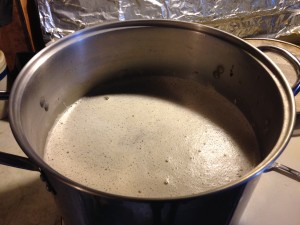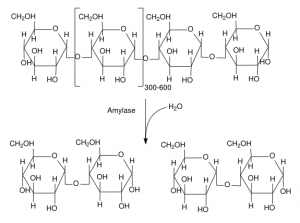This is the fifth article in this series on starch. After an introductory article, I have posted articles on amylose, amylopectin, and starch granules.
In the mash, brewers need to get the starch-degrading enzymes (amylase enzymes) to reduce the large molecules of amylose and amylopectin into mixture of fermentable carbohydrates (esp. the sugar maltose) and non-fermentable carbohydrates. In order for this to occur, the starch needs to be dissolved in water hot enough to dissolve it. This step is call gelatinization, even though gelation might be a more appropriate term. (When starch is dissolved in water, it would be more appropriate to describe the result as a gel. Gelatin is an animal product, formed from collagen.) However, the term “gelatinization” is firmly entrenched in the brewing literature, so I’ll use it here.



Recent Comments